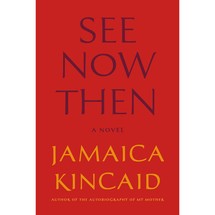Why does a marriage—finally and irrefutably—end? asks Jamaica Kincaid in her latest novel. Mr. and Mrs. Sweet struggle with their very different upbringings while marching forward into an uncertain future. Mr. Sweet, a composer, was raised in wealthy, elegant Manhattan; Mrs. Sweet, a stay-at-home mother, grew up underprivileged on a Caribbean island. Mr. Sweet longs for fame and intellectual companionship, eventually finding it in a younger woman. Mrs. Sweet, on the other hand, is left with her garden and French dishes, a son with ADD and a daughter who hopelessly prefers her father. The sense of lostness on the part of Mrs. Sweet, her feeling that she doesn't fit into this family's tidy Vermont world and that not only is she drowning but also that she is taking her family down with her is what makes the story so compelling—and heartbreaking. "When I as child," she says, "I seemed unable to do anything that please anyone, and that included me, my own self." Kincaid is an inventive writer, best known for her stunning short-story collection
At the Bottom of the River, and in
See Now Then, she takes all kinds of writerly risks: moving from past to present to future, exploring how we think of our relationships in our minds, where beginnings, middles and end exist simultaneously. At times, Mr. Sweet comes off has such an unkind and unforgiving person that he alienates the reader. But persevere: The final chapter of this novel is one of the most moving reflections on the end of love ever written—full of rage and forgiveness and truth. "I don't understand," says Mrs. Sweet, and she is correct. We attempt to identify the facts of the matter when a marriage implodes or love fails despite every effort. We sift through each motivation and action. But there is never one single why that explains it all to our satisfaction. That is life—and that is fiction when it best expresses the human experience.


